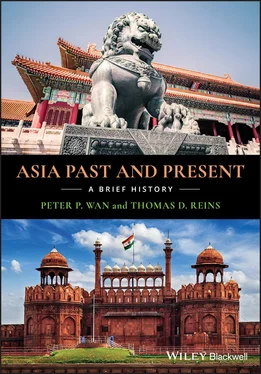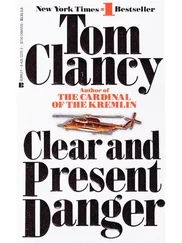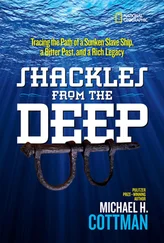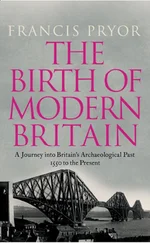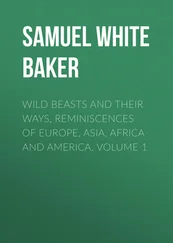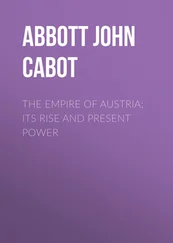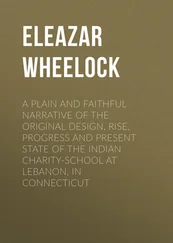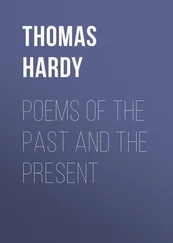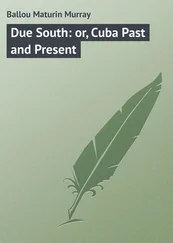Suggested Readings and Viewings
1 Jacques Gernet, Daily Life in China on the Eve of the Mongol Invasion, 1250–1276 (Stanford, CA: Stanford University Press, 1962).
2 Mark Halperin, Out of the Cloister: Literati Perspectives on Buddhism in Sung [Song] China, 960–1279 (Cambridge, MA: Harvard University Press, 2006).
3 Dieter Kuhn, The Age of Confucian Rule: The Song Transformation of China (Cambridge, MA: Harvard University Press, 2011).
4 Mongol (2008), dir. by Sergei Bodrov.
5 Morris Rossabi, Khubilai Khan: His Life and Times (Berkeley: University of California Press, 1988).
6 Yoshinobu Shiba, Commerce and Society in Sung [Song] China (Ann Arbor: University of Michigan Center for Chinese Studies, 1969).
7 Cong Ellen Zhang, Transformative Journeys: Travel and Culture in Song China (Honolulu: University of Hawaii Press, 2010).
8 Zhu Ruixin et al., The Social History of Middle‐Period China: The Song, Liao, Western Xia and Jin Dynasties (Cambridge: Cambridge University Press, 2017).
1 1Wang An‐Shih [Wang Anshi], “Memorial to the Emperor Jen‐tsung [Renzong],” quoted in William Theodore de Bary, comp., Sources of Chinese Tradition, vol. 1 (New York: Columbia University Press, 1960), p. 414.
6 The Decline of Imperial China: The Ming and Early Qing Dynasties, 1368–1840
To restore order in chaotic times, I have no choice but to use harsh measures.
—Zhu Yuanzhang, founding emperor of the Ming Dynasty
The Ming and Qing Dynasties were China’s last two dynasties, each lasting nearly three centuries. At their peak, China surpassed all other nations in the world in terms of wealth, population, territory, and science and technology. But despite the power and magnificence they exhibited, their extreme despotism and conservatism stifled the vigor and creativity that had distinguished Chinese culture during the Tang and Song Dynasties.
The Ming Dynasty (1368–1644): Powerful, Majestic, Conservative, and Brutal
Zhu Yuanzhang (1328–1398) was the founder of the Ming Dynasty. He marched his peasant rebel army under the slogan of “Expel the Mongols—Restore Han China,” captured the Mongol‐Yuan capital of Dadu (1368), and relocated China’s capital to Nanjing. He designated his grandson to inherit his throne, but another son of his seized the throne. The new Emperor Yongle (1360–1424) relocated the capital back to Dadu and renamed it Beijing. Beijing was China’s capital for the next six centuries; the Imperial Palace and the Great Wall as they stand today are renovations of Ming structures.
Zhu Yuanzhang (1328–1398) had the humblest of origins among all major Chinese emperors. He was orphaned in his mid‐teens when his home province was devastated by flood, and his family was wiped out by the plague. Homeless and starving, he took refuge in a small Buddhist monastery. But he soon went drifting again, for the temple had no way of feeding its monks, since it could not collect land rent when there was no harvest. At 25, he joined a major peasant rebel force, the Red Turban Army; married the daughter of his commander; and rose through the ranks to the very top. His wife, who would be the future Empress Ma, was of great help to him on his road to taking the throne. But while he was extremely brutal and paranoid, she was magnanimous. When she became terminally ill, she refused treatment by the physicians her husband had summoned to the palace, for she knew that, if she died after taking their medicine, he would execute them on suspicion of having poisoned her.
Zhu Yuanzhang faced the formidable task of reestablishing Chinese values and institutions after a century of nomadic Mongol rule. Following the ancient maxim that “chaotic times call for harsh measures,” he was personally more despotic than his predecessors, and built a government more centralized than those in earlier dynasties. He promulgated a four‐volume criminal code that provided punishment of extraordinary harshness, showing no mercy to either government officials or the common people. With such brutal means, he strengthened China’s traditional system of monarchism, set standards for government operations, and defined criteria for an individual’s behavior in society.
He stripped his ministers of their independent powers, successfully removing the checks and balances that were put in place during the Tang Dynasty to restrain the powers of the emperor. His control of the government was direct and tight: He could personally make all important decisions, totally free of outside restraints. He employed caning in the royal court as an open punishment for high officials. Other forms of harsh punishment included cutting off fingers, hands, tendons, or kneecaps; castration; public execution by a thousand cuts; skinning alive; and so on. He personally controlled secret agencies that had their own spies and informants who kept close watch on government officials, scholars, celebrities, and the ordinary people. They had the power to make secret arrests, confine suspects in their own jails, use torture in interrogation, and carry out executions.
Timeline: Ming and Early Qing Dynasties, 1368–1842
| 1368–1644 |
Ming Dynasty returns China to Han Chinese rule, builds the Forbidden City, and rebuilds the Great Wall |
| 1328–1398 |
Zhu Yuanzhang, founder of the Ming Dynasty, notorious for being brutal and paranoid; restructures Ming government on Mongol model |
| 1370–1373 |
Policy of “seclusion”; so‐called “Japanese pirate problem” |
| Early Ming |
Commercial revolution follows cotton revolution to create commercialized, market‐oriented, and currency‐based economy. Much of China is now a money society |
| 1380 |
Prime Minister Hu Weiyong (?–1380) is framed and executed; over 30,000 people are put to death for guilt by association; new waves of “literary inquisitions” |
| 1405–1433 |
Admiral Zheng He (1371–1433) makes seven voyages in 28 years, reaching the eastern coast of Africa and the Arabian Peninsula |
| 1472–1529 |
Wang Shouren’s philosophy of the “Doctrine of the Heart” emphasizes the autonomy of the individual, challenging Confucianism |
| 1644 |
Fall of the Ming Dynasty: peasant rebel leader Li Zicheng (1606–1645) enters Beijing with his troops; Ming emperor hangs himself; the Manchu army routs the rebel forces, enters Beijing, and founds the Manchu Qing Dynasty |
| 1644–1911 |
Manchu Qing Dynasty rules China |
| 1661 |
National hero Zheng Chenggong (1624–1662) takes Taiwan from the Dutch and fights a doomed battle with Qing forces to save the Ming Dynasty |
| 1681–1796 |
Qing Golden Age under three competent emperors: Kangxi, Yongzheng, and Qianlong |
| 17th century |
Corn, potato, sweet potato, and peanuts are introduced into China by Westerners, providing abundant nutrition and allowing for great population increase |
| 1724 |
Emperor Yongzheng’s crackdown on the Catholic Church |
| 1772–1781 |
Compilation of the Complete Collection of the Chinese Classics |
| 1760–1842 |
Qing government creates the Guangzhou System to channel all foreign trade through the southern port of Guangzhou |
| 18th century |
Cao Xueqin (1715–1764) writes Dream of the Red Chamber , the pinnacle of Chinese fiction |
| 1793 |
Macartney Mission to discuss Sino‐British trade |
| 1795–1804 |
White Lotus Rebellion |
| 1820– |
Opium problem creates diplomatic and currency problems |
| 1839–1842 |
Opium or First Anglo‐Chinese War |
His paranoia and massive executions were notorious. Even those who had fought with him to put him on the throne could not escape his suspicion and persecution. In order to remove anyone who might challenge him or his descendants, he would frame high civil officials and military commanders and put them to death. The fate of his earlier Prime Minister Hu Weiyong (?–1380) is a vivid illustration of his paranoia and brutality. When he became suspicious that Hu was gathering too much power in his hands, he charged him with plotting treason, promptly executed him, and abolished the position of prime minister. He went on to order the execution of Hu’s relatives, students, and subordinates, as well as many ministers and generals. This case lasted 12 years, and it compromised over 30,000 people who were put to death. It is a typical example of China’s age‐old practice of “guilt by association.” There has been no official position of prime minister in China’s dynasties since. The degree of brutality that Zhu employed to strengthen his absolute power was unknown in earlier Han Chinese history, and was likely influenced by the century‐long Mongol rule.
Читать дальше
